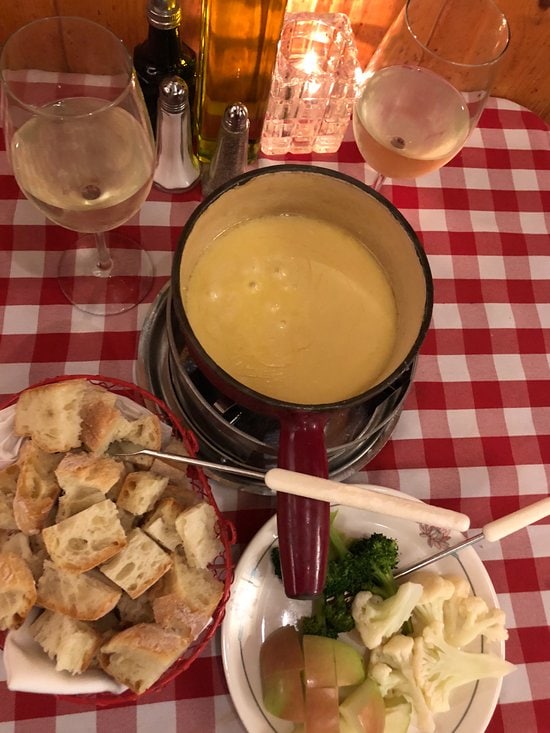
Dipping in the Origins of Fondue
Meaning “to melt” in French, fondue is a mixture of melted cheese with garlic and white wine served in a communal pot over a heat source. Read about the fondue’s history, its origins, and how it popularizes around the globe:
Fondue History & Origins
The origins of the fondue begin in Ancient Greece where there are written records of a recipe consisting of goat cheese, wine, and flour melted and mixed together. Later that evolved to fresh soft cheese and flour as the thickener. And finally, modern fondue uses hard cheese to melt.
In 1699, a cookbook wrote a recipe for cooking wine and cheese together and enjoyed with bread. It was yet to be called fondue. In fact, a dish in the 1700s was named cheese fondue but that was for eggs, and cheese dish was more like fluffy scrambled eggs.
By the early 1800s, Swiss Alpine farmers hardened leftover cheese and stale bread together with wine and garlic – essentially leftovers and what was in hand. Then towards the second half of the 1800s, the dish spread to affluent towns where diners were served a more premium Gruyere cheese. It wasn’t until 1905 that the dish’s consistency smoothened with the introduction of cornstarch.
Fondue really took off in popularity in the 1930s when the Swiss Cheese Union promoted fondue as the national dish to increase the nation’s cheese consumption.
Buy a Fondue Pot for your home!
Cuisinart CFO-3SS 3-Quart Electric Fondue Pot 1000-Watt Electric Fondue Set is Suitable for Chocolate, Cheese, Broth and or Oil, Stainless Steel
Disclaimer: This article contains affiliate links. With no additional cost to you, your purchases earn me a commission if you click on the links via my website – Thank you!
Sign up for my newsletter on the sidebar for blog updates and my travel insider tips! And, check out my vlogs on YouTube!



